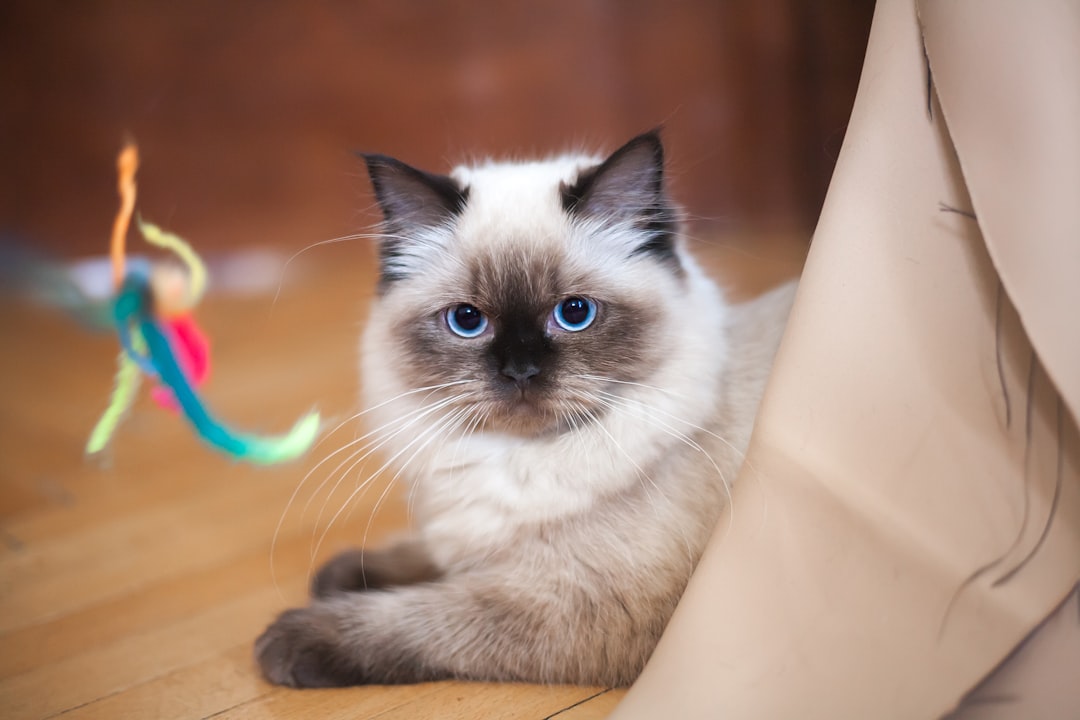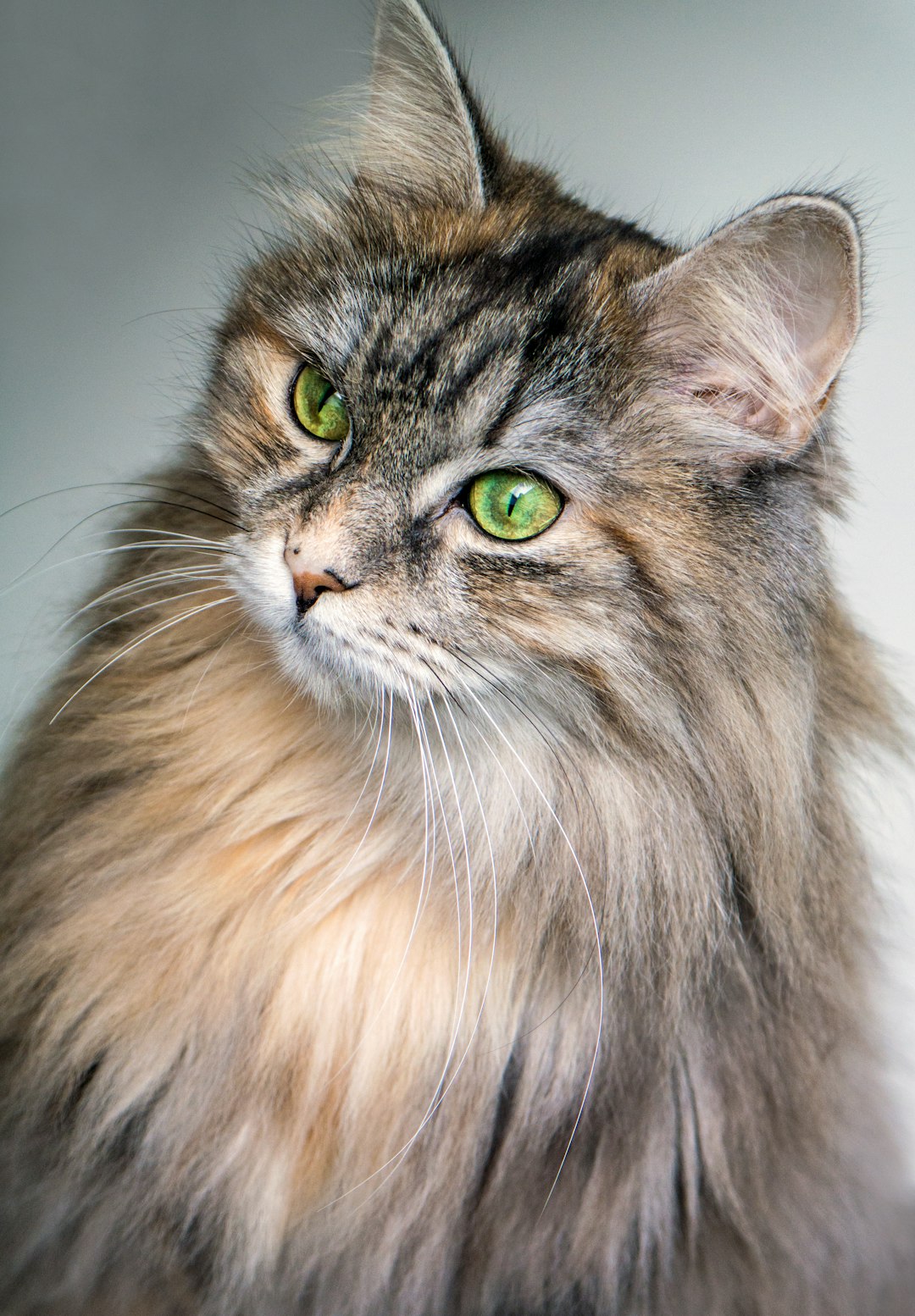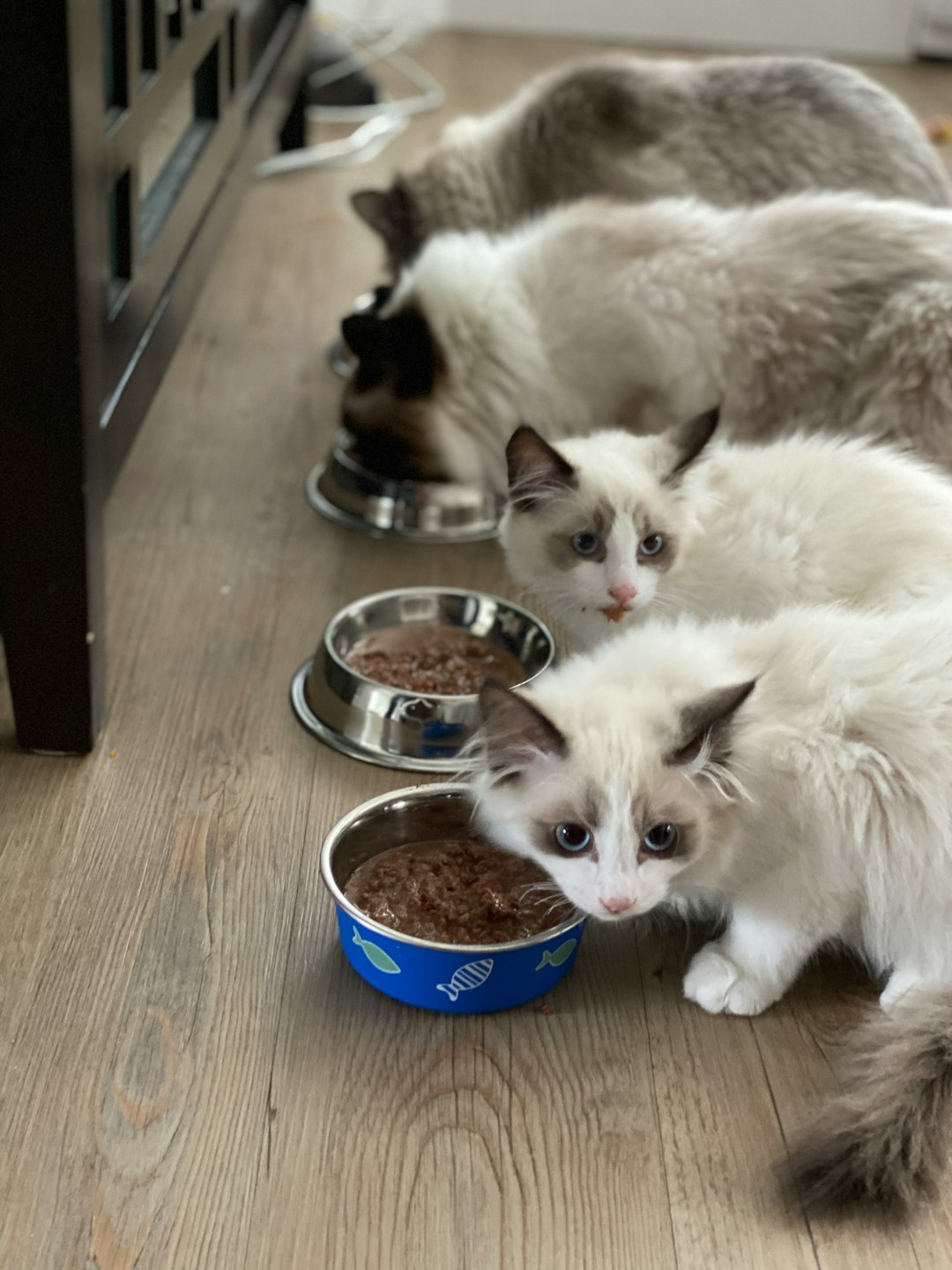Creating a safe and inviting environment for your feline friends should always be a top priority, especially when it comes to plants. Cats are naturally curious creatures, often getting into things they shouldn’t be, including toxic plants. Fortunately, there is a beautiful array of non-toxic plants for cats that not only brighten up your home but also keep your pets safe. In this blog post, we will explore the best non-toxic houseplants, share essential indoor plant care tips for cat owners, and guide you on how to create a cat-friendly indoor jungle. Moreover, we will highlight outdoor plant options, signs of plant poisoning, and even fun DIY projects that incorporate these safe plants. Join us as we embark on this journey to cultivate a harmonious living space for both you and your furry companions.
Understanding Non-Toxic Plants for Cats
What Makes a Plant Non-Toxic?
When selecting greenery for a home shared with feline companions, it’s crucial to choose the right varieties. A non-toxic plant is one that does not contain harmful substances that could pose health risks to cats when ingested. The ASPCA maintains a database that helps pet owners identify these safe options. Typically, non-toxic species feature less irritating compounds and lack substances known to cause distress, like saponins or alkaloids. It is essential to research any potential additions to your home before bringing them inside.
Common Myths About Cats and Plants
There are several misconceptions surrounding cats and plants. One widespread myth suggests that all houseplants are dangerous to cats. In reality, only a limited number of plants are toxic. Additionally, some believe that cats instinctively know which plants are safe versus harmful. However, in their quest for curiosity, many felines will investigate and possibly nibble on any greenery. Understanding which plants are safe for them can alleviate unnecessary worry for cat owners.
Benefits of Having Plants in a Cat-Friendly Home
Incorporating foliage into a home offers numerous benefits, even for those with cats. Here are just a few advantages:
| Benefits | Description |
|---|---|
| Air Quality Improvement | Plants can purify the air by absorbing toxins. |
| Visual Appeal | Greenery enhances the aesthetic of your living space. |
| Mental Wellbeing | Caring for plants can reduce stress and anxiety. |
| Enrichment for Cats | Safe plants can provide stimulation and encourage play. |
Integrating non-toxic options into your cat-friendly home not only cultivates a safer environment but also contributes positively to your well-being and that of your beloved pet.
Top Non-Toxic Houseplants for Cats
Creating a safe and inviting environment for your feline friend can be both enjoyable and beneficial. Incorporating non-toxic plants for cats into your home not only beautifies your space but also ensures the well-being of your pet. Below are a few popular houseplants that are safe for cats.
Spider Plant
The Spider Plant (Chlorophytum comosum) is a resilient choice for pet owners. Its arching leaves and unique spider-like offshoots add an aesthetic appeal to any room. Easy to care for, this plant thrives in indirect sunlight and tolerates occasional neglect—perfect for busy cat owners.
| Benefits | Care Tips |
|---|---|
| Air purification | Water when the top inch of soil is dry |
| Non-toxic to cats | Prefers indirect sunlight |
Boston Fern
Another excellent choice is the Boston Fern (Nephrolepis exaltata). This lush and feathery plant creates a vibrant ambiance, making it an attractive addition. It enjoys humid conditions, so misting its leaves can promote healthy growth.
| Benefits | Care Tips |
|---|---|
| Humidity retention | Keep soil consistently moist |
| Non-toxic to cats | Require indirect light |
Bamboo Palm
The Bamboo Palm (Chamaedorea seifrizii) is not only a visually striking plant but also serves as a natural humidifier. This hardy palm thrives in low light and is known for its air-purifying qualities, making it a healthy option for homes with pets.
| Benefits | Care Tips |
|---|---|
| Air filtration | Water when the top inch of soil is dry |
| Non-toxic to cats | Prefers indirect sunlight |
Integrating non-toxic plants for cats enriches your living space while keeping your furry friends safe. Each of these options brings unique benefits and care tips for a thriving indoor garden.
Indoor Plant Care Tips for Cat Owners
Choosing the Right Soil
Selecting the appropriate soil is essential for keeping your non-toxic plants for cats healthy. Opt for organic potting mixes that are free from harmful chemicals. Look for soil that retains moisture yet provides adequate drainage, which helps prevent overwatering—another risk factor for plant issues.
| Soil Type | Benefits | Considerations |
|---|---|---|
| Organic Potting Mix | Chemical-free, nutrient-rich | May need regular fertilization |
| Succulent Mix | Well-draining, prevents rot | Best for cacti and succulents |
| All-Purpose Mix | Versatile for various plants | Ensure it’s pet-friendly |
Watering Advice for Cat-Friendly Plants
Proper watering is crucial when caring for plants in a cat-friendly home. Generally, the best practice is to allow the top inch of soil to dry before watering again. This helps prevent overwatering, which can lead to root rot. Additionally, you can utilize self-watering pots for convenience, ensuring your non-toxic plants for cats receive consistent hydration.
| Watering Frequency | Best Practices |
|---|---|
| Weekly | Check soil moisture before watering |
| Bi-weekly (in winter) | Reduce frequency, monitor closely |
Pruning and Maintenance
Regular pruning helps your plants stay healthy and encourages new growth. When trimming, always use clean, sharp scissors to prevent disease spread. Additionally, remove any dead or yellowing leaves promptly. This not only keeps your plants looking great, but it also maintains a safe environment for your feline friends, minimizing the risk of curious cats snacking on wilted foliage.
| Maintenance Task | Frequency | Tips |
|---|---|---|
| Pruning | Every few months | Trim unhealthy leaves |
| Cleaning Leaves | Monthly | Wipe with a damp cloth to remove dust |
By following these indoor plant care tips, you can nurture a thriving plant environment while ensuring the safety of your beloved cats.
Creating a Safe Plant Environment for Cats
Establishing a safe plant environment for your feline friends is essential. Not only do non-toxic plants for cats enhance your living space, but they also offer an engaging territory for your pets. Here are some key strategies to create a harmonious atmosphere.
Plant Placement Strategies
Choosing the right location for your plants is crucial. Consider the following tips:
| Strategy | Description |
|---|---|
| Elevated Surfaces | Place plants on shelves or high tables to prevent access. |
| Corner Spaces | Use corners that are harder for cats to reach. |
| Hanging Planters | Utilize hanging pots that swing freely away from paws. |
Using Decorative Containers
Decorative containers not only beautify your home but can also deter your cat’s curiosity. Here’s how:
| Container Type | Benefit |
|---|---|
| Weighted Pots | Heavier containers make it harder for cats to topple. |
| Enclosed Terrariums | Protects plants while still allowing viewing pleasure. |
| Textured Surfaces | Irregular surfaces can discourage climbing. |
Keeping Cats Away from Non-Toxic Plants
While non-toxic plants for cats are safe, you still want to manage their access:
| Technique | Implementation |
|---|---|
| Fencing or Barriers | Small decorative fences can keep cats at bay. |
| Repellent Sprays | Use cat-safe deterrents in the vicinity. |
| Training & Distraction | Train your cat to avoid plants using toys and treats. |
By using these strategies, you can enjoy the beauty of plants while ensuring your cats remain safe and entertained.
Outdoor Non-Toxic Plants for Cats
Safe Garden Plants
When selecting non-toxic plants for cats, it’s essential to incorporate varieties that pose no harm while providing aesthetic appeal. Some excellent options include:
| Plant Name | Sunlight Requirement | Growth Habit |
|---|---|---|
| Catnip | Full sun to partial shade | Spreading |
| Spider Plant | Indirect sunlight | Arching |
| Boston Fern | Indirect sunlight | Clumping |
| Areca Palm | Bright, indirect light | Tall, feathery |
| Calathea | Indirect bright light | Compact |
These plants not only enhance your garden but also provide safe spaces for your feline friends to explore.
Creating a Cat-Friendly Outdoor Space
Designing an outdoor area can be an exciting project for cat owners. Consider providing:
- Enclosures or catios: These structures allow cats to enjoy fresh air while remaining secure.
- Dedicated pathways: Create safe routes lined with non-toxic foliage for your cats to safely wander.
- Shaded corners: Make sure you offer shaded spots for hydration and rest during sunny days.
By focusing on both safety and comfort, you can create an inviting environment for your pets.
Caring for Outdoor Plants Around Cats
Maintaining outdoor plants around your pets requires extra attention. Here are some helpful tips:
- Pest Control: Use safe, natural pest repellents instead of toxic chemicals.
- Watering Routine: Ensure your plants are well-watered, so your cats are less likely to nibble on dry vegetation.
- Regular Maintenance: Trim back any overgrown areas to prevent hiding spots for pests or hiding plants that might be harmful.
By adhering to these practices, you can cultivate a lush garden atmosphere for your cats while keeping their well-being intact.
Signs of Plant Poisoning in Cats
Recognizing Symptoms
Cats are notoriously curious creatures, often nibbling on plants around the house. Awareness of the symptoms of plant poisoning in cats is crucial for any cat owner. Common signs include:
| Symptom | Description |
|---|---|
| Vomiting | Frequent throws up, sometimes with plant material visible |
| Diarrhea | Loose, watery stools, often leading to dehydration |
| Lethargy | Decreased energy and reluctance to play or move |
| Loss of Appetite | Sudden lack of interest in food |
| Drooling | Excessive salivation, sometimes indicating distress |
Being vigilant for these symptoms can help you take timely action if needed.
What to Do If Your Cat Ingests a Plant
If you suspect your cat has ingested a non-toxic plant, remain calm and take the following steps:
- Remove Access: Instantly remove the plant to prevent further ingestion.
- Monitor Symptoms: Keep a close eye on any changes in behavior or health.
- Document the Plant: Take a photo of the plant and note the amount your cat may have eaten.
When to Consult a Veterinarian
If your cat exhibits any serious symptoms, such as persistent vomiting or severe lethargy, it’s vital to seek veterinary care promptly. Always contact the vet in the following situations:
- Severe Symptoms: If your cat shows signs of distress, like difficulty breathing.
- Persistent Issues: Vomiting or diarrhea that lasts more than 24 hours.
- If Unsure About Plant Toxicity: If you’re uncertain whether the plant is safe, it’s best to consult your veterinarian.
By being attentive and informed about the signs of plant poisoning in cats, you can ensure a safer environment filled with non-toxic plants for cats.
Popular Non-Toxic Plants That Cats Love
Creating a cat-friendly environment involves not just safety but also creating a delightful space where our feline friends can thrive. Here are some non-toxic plants for cats that they adore!
Catnip
Catnip, scientifically named Nepeta cataria, is famous for its euphoric effects on cats. When exposed to the scent of catnip, many cats exhibit playful and energetic behavior. This perennial plant is easy to grow and can thrive both indoors and outdoors. Some key benefits of catnip include:
| Benefit | Description |
|---|---|
| Stimulates Playfulness | Encourages active behavior in cats. |
| Self-Grooming Aid | Cats may nibble on it, aiding digestion. |
| Safe and Easy to Grow | Requires minimal care, thriving in well-drained soil. |
Cat Grass
Cat grass generally consists of several grasses like wheat, oat, or barley. Felines are naturally attracted to it, enjoying the taste and texture. It’s not just a treat; it’s essential for their digestive health and can help prevent hairballs.
| Feature | Details |
|---|---|
| Promotes Digestion | Aids in reducing hairballs. |
| Safe to Chew | Non-toxic and beneficial for cats. |
| Indoor Gardening | Can be easily grown in pots indoors. |
Valerian
Valerian, or Valeriana officinalis, serves as another exciting option for your furry companions. Though it doesn’t affect all cats, those that do react often become playful and energetic, similar to the effects of catnip.
| Characteristics | Details |
|---|---|
| Natural Relaxant | Can help calm anxious cats. |
| Appealing Aromas | The scent can attract curious felines. |
| Easy Cultivation | Thrives in a variety of soils and light. |
Incorporating these plants into your home provides your cat with playful enrichment while ensuring their safety. Remember, nurturing a space filled with non-toxic plants for cats fosters a joyful and safe environment for your beloved pets!
Building a Cat-Friendly Indoor Jungle
Creating a cat-friendly indoor jungle is not only visually appealing but also beneficial for your feline friend. By carefully selecting non-toxic plants for cats, you can enhance your home while ensuring safety. Below are key strategies to build an inviting indoor environment filled with greenery and playfulness.
Layering Plants for a Natural Look
Layering your plants can simulate a natural ecosystem, making your indoor jungle more engaging. Combine plants of varying heights and textures for visual interest. Here’s a quick reference table highlighting some plants suitable for different layers:
| Layer | Plant Type | Benefits |
|---|---|---|
| Tall | Cat Grass (Dactylis glomerata) | Provides a chewable snack |
| Medium | Spider Plant (Chlorophytum comosum) | Air purification |
| Low | Boston Fern (Nephrolepis exaltata) | Humidity regulation |
Creating Play Areas Among Plants
Designate playful zones within your jungle to keep your cat engaged. Consider setting up spots with plush beds or toys hidden among plants. These areas encourage exploration and play, fostering mental and physical stimulation.
- Tip: Use crinkly or texture-rich toys that pique cats’ curiosity, stimulating their natural hunting instincts in a safe environment.
Incorporating Vertical Gardening
Vertical gardening maximizes space and provides climbing opportunities for your cat. Install wall-mounted plant shelves or hanging planters to create a natural climbing pathway. Some beneficial plants to include in your vertical garden are:
- Pothos (Epipremnum aureum): Trailing vines that are ideal for high shelves.
- Bamboo Palm (Chamaedorea seifrizii): Adds height and greenery at eye level.
- Nasturtiums (Tropaeolum majus): Can drape beautifully and offer edible flowers.
Incorporating these elements contributes to a lush environment, transforming your home into a safe haven filled with non-toxic plants for cats that your furry companion will adore.
DIY Projects with Non-Toxic Plants
Plant Arrangements and Displays
Creating eye-catching plant arrangements is a fantastic way to showcase non-toxic plants for cats while ensuring your feline’s safety. Consider using wall-mounted shelves for a vertical garden, which not only saves space but also elevates your plants out of paw’s reach. Combine different plants in decorative pots to add character to any room. For instance:
| Plant Type | Pot Size | Light Requirement |
|---|---|---|
| Spider Plant | Medium | Indirect sunlight |
| Boston Fern | Large | Slightly shaded |
| Calathea | Small | Low light |
Herb Gardens for Cats
Growing a mini herb garden is a delightful DIY project that benefits both your kitty and your culinary skills. Many herbs are safe for cats and can even be enjoyed by them. Consider planting:
- Catnip: A favorite among felines, known for its stimulating effects.
- Cat Grass (Wheatgrass): Perfect for digestion and a natural treat.
- Basil: Usable in human recipes and safe for cats.
With a small container or vertical planter, you can create a lush herb garden and enjoy fresh herbs while providing your pet with safe munchies.
Crafting with Dry Plants
Repurposing dried non-toxic plants for cats into craft projects can be both sustainable and fun. Use dried flowers and foliage to create beautiful wreaths or potpourri. These projects not only enhance your home décor but also keep your environment eco-friendly. For example:
| Craft | Materials Needed |
|---|---|
| Wreath | Dried lavender, twine, grapevine |
| Potpourri | Dried chamomile, essential oils |
By engaging in these DIY projects, you can create a cat-friendly environment that pleases the eyes while keeping your beloved pets safe.
Educational Resources for Cat Owners
Books on Non-Toxic Plants
For cat owners looking to deepen their understanding of safe flora, various informative books are available. Titles like “The Cat Lover’s Guide to Plant Life” provide insights into which plants are safe for felines while also offering tips on indoor plant care. Additionally, “Safe Plants for Cats: A Comprehensive Guide” is an excellent resource that details many non-toxic plants. These books often include illustrations and care instructions, making it easy for you to identify and keep your home safe for your furry companions.
Online Communities and Forums
Connecting with fellow cat owners can be incredibly beneficial. Online platforms such as Reddit, and Facebook groups dedicated to pet owners provide spaces to discuss experiences and gather advice on non-toxic plants for cats. You can share your own findings and learn from others regarding what plants thrive well in homes with cats. These communities often discuss local nurseries that specialize in pet-safe flora, making it easier to find the right plants.
Vet Recommendations for Plant Safety
Your veterinarian can be a valuable resource when it comes to understanding plant safety. Many vets provide literature on non-toxic plants for cats and will gladly discuss which plants to avoid. Scheduling regular check-ups can ensure that your vet stays updated on your pet’s health and can advise you on new developments in plant safety. Additionally, some vets may offer pamphlets or suggest reputable websites that list safe plant choices for cat owners. By collaborating with your veterinarian, you can create a safer living space for your beloved feline friend.
Frequently Asked Questions
What are some common non-toxic plants that are safe for cats?
There are several non-toxic plants that are considered safe for cats. Some of these include spider plants, Boston ferns, and cats’ favorite, catnip. Other options are parlor palms, bamboo palms, and money plants (Pothos) without the toxic varieties. It is crucial to research each plant’s specific care needs and verify their non-toxicity with reliable sources to ensure a safe environment for your feline friend.
How can I tell if a plant is toxic to my cat or not?
To determine if a plant is toxic to your cat, you should consult reliable sources such as the ASPCA’s Toxic and Non-Toxic Plants list or the Pet Poison Helpline. Look for the scientific name of the plant, as common names can vary. Additionally, consider noting any leaf or flower characteristics that may help in identification. If you’re unsure, always err on the side of caution and choose only plants listed as non-toxic.
What steps should I take to create a safe space for my cat with plants?
Creating a safe space for your cat with plants involves careful selection and placement of non-toxic varieties. Start by choosing well-known safe plants and avoiding any that are common household toxic plants. Ensure that the plants are securely placed to prevent tipping over and remove any dead leaves or flowers, as they can pose a choking hazard. Regular monitoring of your cat’s behavior around plants is also essential to ensure their safety.
Are there specific care tips for non-toxic plants in a cat-friendly environment?
Yes, when caring for non-toxic plants in a cat-friendly environment, consider placing them out of reach if your cat tends to chew on plants. Opt for pots with good drainage and ensure you use pet-safe fertilizers. Water your plants appropriately without allowing them to become waterlogged. Additionally, monitor your plants for signs of pests or disease and take prompt action, all while ensuring any pest control methods are safe for pets.
Can I use plant-based fertilizers or pesticides around my cats?
While some plant-based fertilizers or pesticides may seem safer, it is imperative to check if they are indeed safe for pets. Even natural products can cause adverse reactions in animals. Look for fertilizers and pesticides that are labeled as pet-safe and follow the manufacturer’s instructions. If in doubt, consider using organic alternatives or consult your veterinarian for recommendations on safe gardening practices that won’t harm your furry friends.



